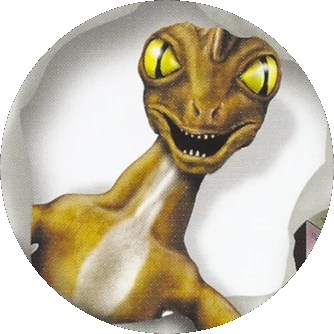Adult ichneumon wasps don't sting, and feed harmlessly on flower nectar. The young ones, however, gobble up insect larvae, with a big assist from their moms. Female ichneumon wasps use long, needle-like tubes to lay their eggs inside of insect larvae. The wasps' young feed on the larvae from inside and eat their hosts alive. Some wasps drill through tree bark to find the most nutritious larvae in which to deposit their eggs.
Drill Bit: Female ichnuemon wasps have long, thin lances called ovipositors on their abdomens. These lances are actually tipped with metals, such as zinc, that easily break through tough bark on trees.
Now Hear This: Ichneumon wasps have such acute hearing that they can listen to the sounds of insect larvae munching on wood inside trees. When a female hears a grub, she begins to drill.
Mother Knows Best[]

The wasp stands tall to drill.
When it comes to finding a good home for their eggs, ichneumon wasps are very picky. Some will lay their eggs only on the backs of surface-dwelling larvae, while others seek out those inside trees. Some ichneumon wasps target specific species of insect grubs in their habitats; it's thought that these grubs are selected as hosts because they have the highest nutritional value for the wasps' young.
Handstand: These wasps have long legs to aid in their egg-laying feats. Some species have to contort themselves to make enough room to swing around their 2-inch ovipositors and drill into trees.
Best Defense: Some ichneumon wasp eggs carry viruses that infect their hosts. These viruses attack the host's immune system and weaken its inner defenses so they can't attack the egg.
Baby Food[]
- The primary function of the female ichneumon wasp's ovipositor is to lay eggs. The wasp hears a larva inside a tree and drills through the bark, probing the grub with her lance to make sure it is a nutritious species. If it is, she stabs the larva and lays an egg inside of it.
- When the egg hatches, the wasp larva begins to eat its host from the inside out. The young wasp begins by feeding on its host's fatty tissues, keeping it alive as long as possible by saving its vital organs for last. When the grub is finally dead, the wasp larva chews its way out.
Trading Card[]
Trivia[]
- The knowledge card says Ichneumon Wasps. The trading card says Ichneumon Wasp.
- The ichneumon wasp is mentioned on the Puss Moth knowledge card as a threat to the caterpillar, referred to as "ichneumon fly".
